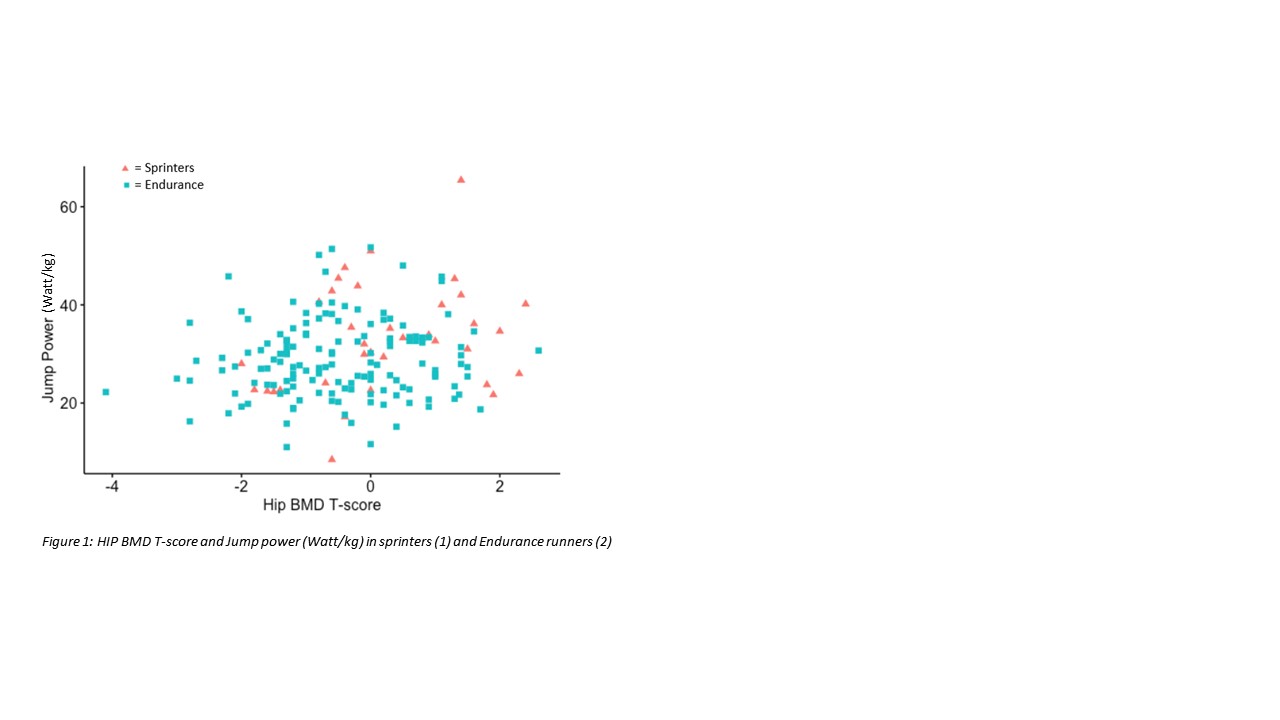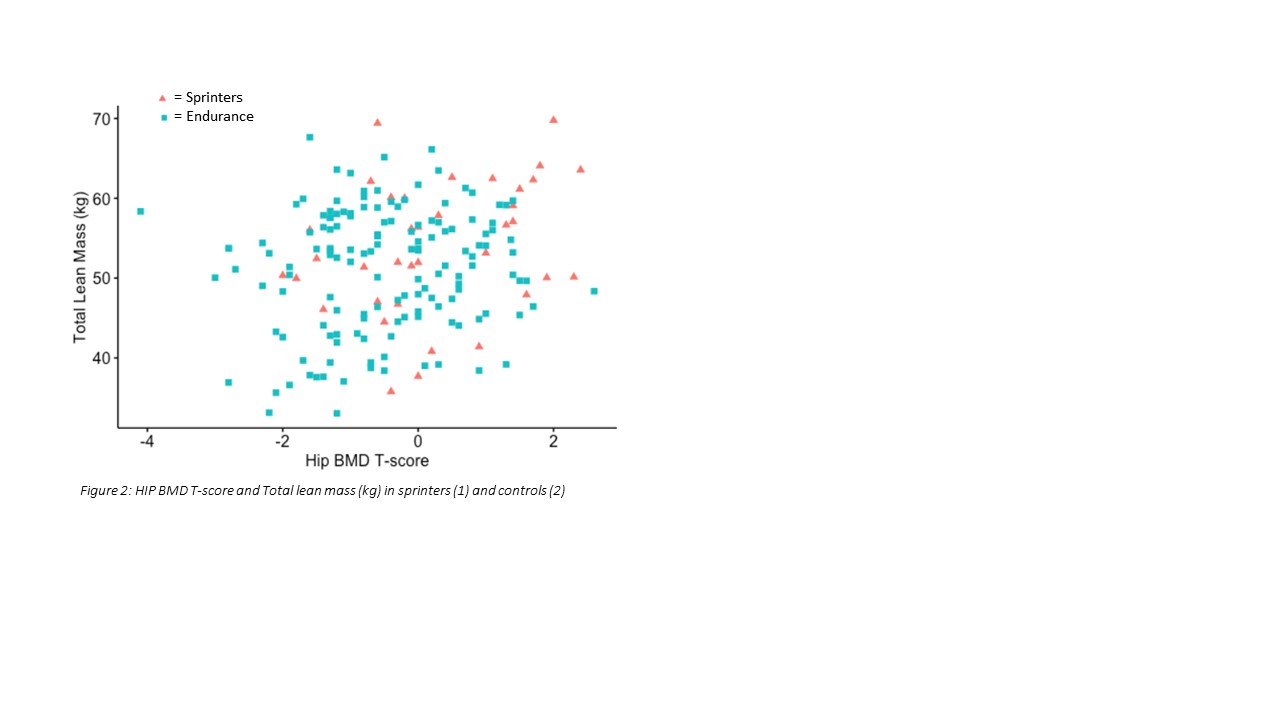Introduction Osteoporosis rehabilitation programs widely recognize the beneficial effects of weight-bearing exercise for long-term bone health. However, endurance running has been related to reduced bone mass and potential osteoporosis risk in older age [1], with greater average weekly mileage negatively correlated with lumbar spine BMD [2]. In younger individuals, lean mass is the main determinant of peak bone mineral density [3], and maximum jump power is positively correlated to whole body bone mineral density (BMD) [4]. However, data in older athletic populations are lacking. This study aimed to determine associations between bone health, total lean mass (TLM), and lower limb power in older competitive runners. Methods 187 masters athletes were recruited as part of the VIBE study [5], consisting of 38 sprinters (71.1 ± 6.7 years; 28M) and 149 endurance runners (69.7 ± 5.5 years; 111M). Right hip BMD (YA T-score) was assessed using dual energy x-ray absorptiometry (DXA) and resulting T-scores recorded. TLM was assessed via DXA, with lower limb muscle power (normalised to body weight) measured during a countermovement vertical jump (Leonardo Jump Mechanography Platform). Participants repeated the jump sequence 3 times, resting for 60 seconds between efforts. The jump with the highest value for power was used for statistical analysis. Hip BMD T-scores, lean mass and jump power were compared across sprinters and endurance runners with unpaired t-test models adjusted for sex. Linear regression models adjusted for sex were performed on each cohort to account for within-group variability and to determine the relationship between hip BMD T-score, TLM, and jump power. Statistical analysis was performed using Stata (V.16) and significance was assumed as p<0.05. Results Sprinters mean T-scores was greater than that of endurance runners (0.27±1.21 vs. -0.49±1.15, p<0.001). TLM was greater in power athletes compared to endurance athletes (54.11±8.19 vs. 50.88±7.72 kg, p=0.024). Lower limb power was also greater in the sprinters (33.31±10.97 vs. 28.80±7.86 W/kg, p=0.0051). Linear regression models adjusted for sex revealed TLM was not associated with hip BMD T-score in sprinters (β [95% CI] 0.89 [-0.68 to 2.46], P=0.258) or endurance runners (-0.45 [-1.23 to 0.33], p=0.253). Jump power was not associated with hip BMD T-score in sprinters (1.96 [-1.166 to 5.088], p=0.211) or in endurance runners (0.097 [-1.028 to 1.22], p=0.865). Discussion Compared to masters endurance athletes of a similar age, masters sprinters have greater hip BMD T-score, TLM and lower limb power. However, contrary to what is commonly reported in young individuals, in neither group of masters athletes is there a clear relationship between bone health and lean mass. Power training, as commonly undertaken by sprinters, has unsurprisingly resulted in greater lower limb power, however, has also conferred benefits to bone health, when directly compared to endurance athletes. These findings may inform practitioners when recommending physical activity for older adults, supporting the notion of encouraging resistance training in older age to improve parameters of bone health such as bone mineral density and decrease the risk of bone diseases.
Future Physiology 2021 (Virutal) (2021) Proc Physiol Soc 47, PC49
Poster Communications: Exploring associations between bone health and muscle mass and function in masters athletes
Anna Quinn1
1 University College Dublin, Dublin, Ireland
View other abstracts by:
Where applicable, experiments conform with Society ethical requirements.


